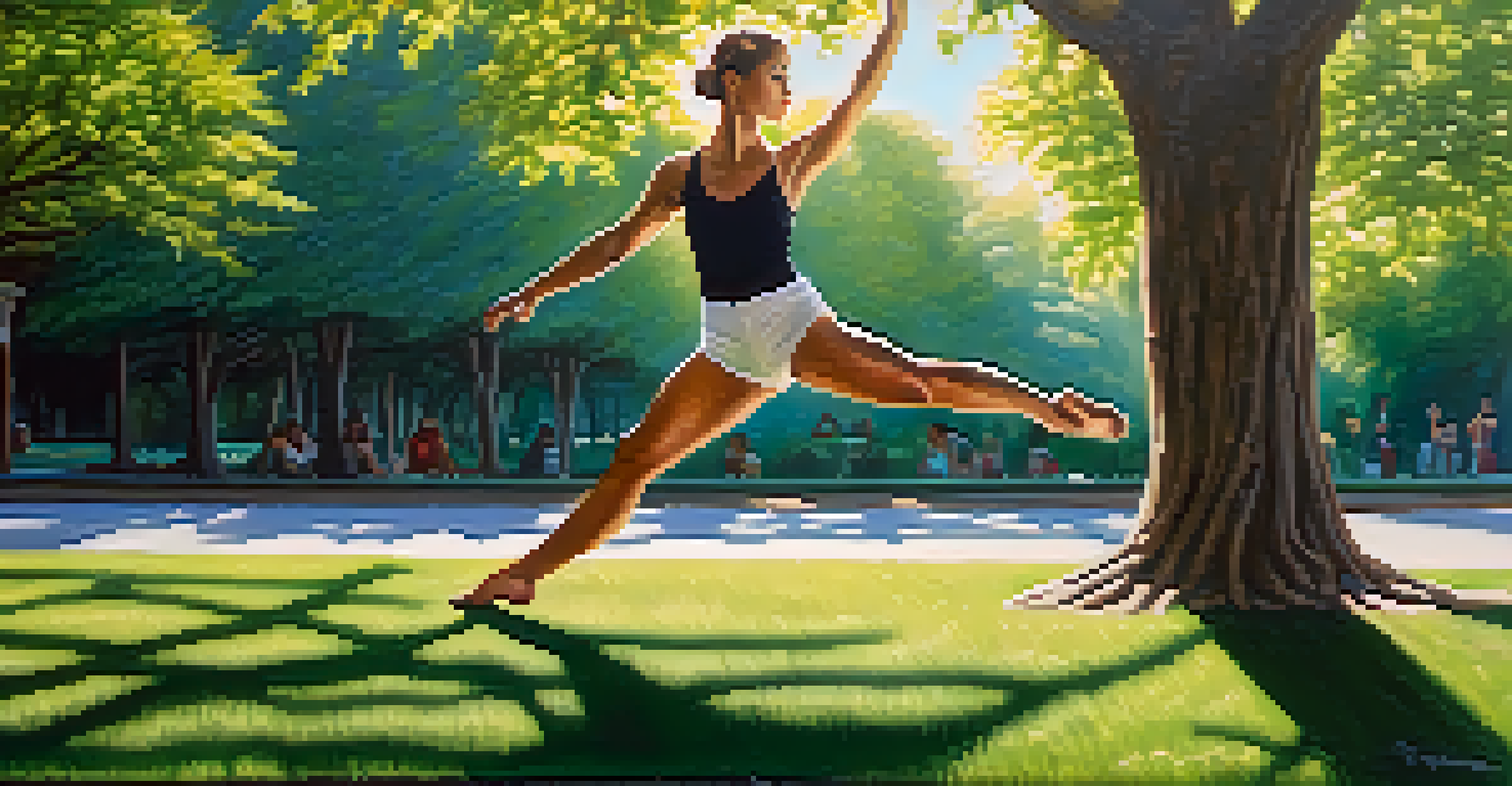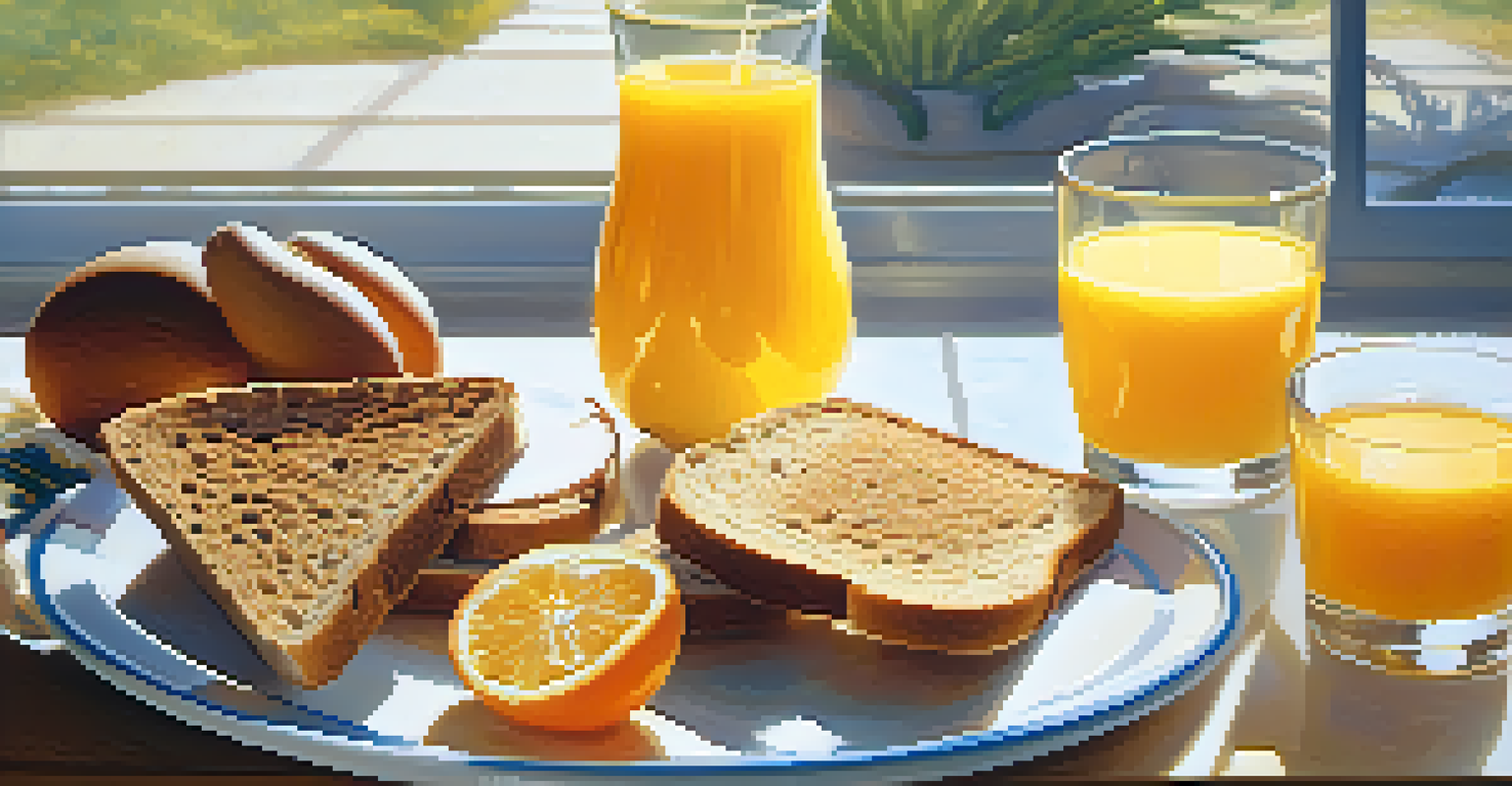The Role of Vitamins and Minerals in Dancer Health

Understanding the Basics of Vitamins and Minerals
Vitamins and minerals are essential nutrients that our bodies need to function properly. Think of them as the building blocks that help maintain our health and energy levels, especially for dancers who rely on their physical performance. Vitamins are organic compounds, while minerals are inorganic elements, both playing unique roles in bodily processes.
Let food be thy medicine and medicine be thy food.
For dancers, these nutrients are crucial not just for energy, but also for recovery and injury prevention. A deficiency in certain vitamins can lead to fatigue or impaired performance, which is the last thing a dancer wants. Understanding these nutrients is the first step toward optimizing health and performance on stage and in practice.
Incorporating a variety of colorful fruits, vegetables, whole grains, and lean proteins into your diet can help ensure you get a balanced intake of these essential nutrients. By doing so, dancers can fuel their bodies effectively for the rigorous demands of their art form.
The Importance of Vitamin D for Dancers
Vitamin D is often called the 'sunshine vitamin' because our bodies produce it when exposed to sunlight. For dancers, this vitamin is vital for bone health, as it helps with calcium absorption—a key mineral for maintaining strong bones. Strong bones are essential for preventing injuries during high-impact dance moves.

In addition to bone health, vitamin D also plays a role in muscle function and immune system support. A deficiency can lead to muscle weakness and increased susceptibility to illness, which can sideline a dancer from rehearsals and performances. Therefore, it’s important for dancers to monitor their vitamin D levels.
Vitamins and Minerals Matter
Essential nutrients like vitamins and minerals are crucial for dancers' energy, recovery, and overall performance.
To boost vitamin D intake, dancers can spend some time outdoors, especially during sunny days, and include foods like fatty fish, fortified dairy products, and egg yolks in their diets. Supplements can also be considered, particularly in winter months or for those with limited sun exposure.
B Vitamins: Energy Powerhouses for Dancers
B vitamins, including B1 (thiamine), B2 (riboflavin), B3 (niacin), B6, B9 (folate), and B12, are crucial for energy metabolism. They help convert carbohydrates, fats, and proteins into usable energy, which is essential for the stamina required in dance. Without adequate B vitamins, dancers may feel sluggish and unable to perform at their best.
The greatest wealth is health.
Additionally, B vitamins play a role in red blood cell formation, which is vital for oxygen transport throughout the body. This means that a well-nourished dancer can sustain longer, more intense dance sessions without experiencing fatigue. It’s a bit like ensuring your car has enough fuel to keep going.
Good sources of B vitamins include whole grains, meats, eggs, legumes, and leafy greens. By incorporating a variety of these foods into their meals, dancers can support their energy levels and overall performance.
The Role of Calcium in Dancer Health
Calcium is perhaps best known for its role in building strong bones and teeth, making it particularly important for dancers. The physical demands of dance can put stress on bones, so adequate calcium intake helps maintain bone density and reduce the risk of fractures. This is crucial for dancers who often perform high-impact routines.
Beyond bone health, calcium also aids in muscle contraction and nerve function. This means that dancers need calcium not just for structural integrity, but also for optimal performance during their routines. Think of calcium as the safety net that supports both your body and your movements.
Balanced Diet for Dancers
A well-rounded diet that includes a variety of foods supports optimal health and performance for dancers.
Dairy products, leafy greens, and fortified foods are excellent sources of calcium. Dancers should strive to include these foods in their diet to ensure they meet their calcium needs, especially during periods of intense training.
Vitamin C: The Antioxidant and Immune Booster
Vitamin C is well-known for its immune-boosting properties, which is particularly important for dancers who need to stay healthy and avoid illnesses that could interrupt their training. This vitamin acts as a powerful antioxidant, helping to protect the body from oxidative stress caused by intense physical activity.
Furthermore, vitamin C aids in collagen production, which is crucial for joint and tissue health. For dancers, maintaining flexibility and reducing the risk of injury is essential, and vitamin C can help support these goals. Imagine your joints wrapped in a protective layer, allowing for graceful movements without discomfort.
Fruits like oranges, strawberries, and kiwis are excellent sources of vitamin C, as are vegetables such as bell peppers and broccoli. Dancers should aim to incorporate these colorful foods into their diets to keep their immune systems strong and their bodies resilient.
Magnesium: The Unsung Hero of Muscle Function
Magnesium is often overlooked, but it plays a key role in muscle function and energy production. For dancers, who rely heavily on their muscles for performance, maintaining adequate magnesium levels is crucial to prevent cramping and fatigue. Think of magnesium as the grease that keeps the machinery running smoothly.
In addition to muscle function, magnesium also helps regulate heart rhythm and supports bone health, making it an all-around essential nutrient for dancers. A deficiency in magnesium can lead to increased muscle soreness and slower recovery times after intense practices or performances.
Hydration is Key
Staying hydrated is vital for dancers, as it aids in nutrient transport and muscle function during their rigorous routines.
Foods rich in magnesium include nuts, seeds, whole grains, and leafy greens. By incorporating these foods into their meals, dancers can help ensure their muscles remain functional and ready for the demands of their art.
Iron: Fueling Dancers’ Energy Levels
Iron is a critical mineral for dancers, primarily because it plays a vital role in oxygen transport throughout the body. Hemoglobin, the protein in red blood cells, requires iron to carry oxygen to muscles, which is essential during dance performances. Without sufficient iron, dancers can experience fatigue and decreased performance.
Dancers, especially females, are at a higher risk of iron deficiency due to the demands of their training and, in some cases, dietary restrictions. This can lead to a condition known as anemia, which can significantly impact energy levels and overall health. It’s like trying to run a race with a flat tire—difficult and unproductive.

To boost iron intake, dancers should include sources like red meat, poultry, fish, beans, and fortified cereals in their diets. Pairing these iron-rich foods with vitamin C sources can enhance absorption, ensuring the body gets the most benefit.
Creating a Balanced Diet for Optimal Dance Performance
A balanced diet is the cornerstone of health for dancers, combining all the necessary vitamins and minerals to support their rigorous schedules. This means not just focusing on individual nutrients, but rather ensuring a variety of food groups are represented in daily meals. Think of your plate as a palette—each color and food group adds something unique to your overall health.
Meal planning can be an effective strategy for dancers to ensure they’re getting the nutrients they need. Incorporating a mix of carbohydrates for energy, proteins for muscle repair, and healthy fats for overall health can create a well-rounded diet that fuels their performance. It’s like preparing for a dance—every element matters to achieve the perfect routine.
Staying hydrated is also essential, as water supports all bodily functions, including nutrient transport and muscle function. By prioritizing a balanced diet and hydration, dancers can maintain their health and maximize their performance potential.